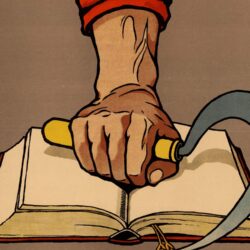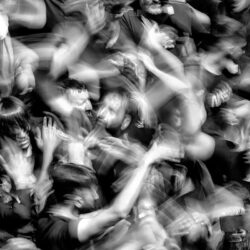My social science career: Interview with Sonia Livingstone
 As part of a series of occasional interviews with leading social scientists, socialsciencespace talks to Sonia Livingstone, Professor in Media and Communications at the London School of Economics.
As part of a series of occasional interviews with leading social scientists, socialsciencespace talks to Sonia Livingstone, Professor in Media and Communications at the London School of Economics.
How is the role of media changing?
Media are becoming not just something we engage in for leisure, but a fundamental way in which we connect with and participate in everything from our social relations to education to civic life. It’s a fast-moving field –anything before 2006 is already considered defunct, which is interesting in itself. The changing media landscape is mediating democratic participation, reshaping our educational possibilities (especially for informal learning) and reconfiguring our social networks. There’s been a dramatic repositioning of young people, who are now the digital natives with something to teach us. Every field – whether politics, education, social development – has questions now about the importance of media and IT, which has created a parallelism that is not quite multidisciplinary but is starting to link them up.
Tell us about your current research.
In other social sciences, the assumption is that family life is still unmediated – that families talk to each other and children are brought up by parents face-to-face. In my research, I see that families are mediated: media provides the mechanism that brings them together, and enables them to stay in touch while dispersed. My focus is on how audiences are changing as the media landscape changes, and on comparing how children and young people across Europe use the internet and new media. How are new media really changing social life, and what are the ways that people can adapt media to suit their circumstances rather than being changed by it? In my comparative research, I’ve been influenced by Jay Blumler, who always urged an international agenda that wasn’t a bland, universalizing agenda but was comparative in a carefully structured way.
Which publications have you found most influential over the years?
John Fiske’s ‘Television Culture’ is one of the few books of the 1980s that I can still get students to read. It was a very exciting text that showed how serious debate around semiotics, film theory, language and philosophy of meaning could be applied to popular culture in a way that opened up a new series of questions about how people used popular culture in their daily lives. I was lucky to be doing my PhD at that time, when scholars began to want to understand how audiences interpret, based on their context, and audience research really took off. Dallas was being exported all over the globe and people used it as a way of critiquing American ideology or drawing parallels with their own life. They were not brainwashed but arguing, thinking, resisting, being creatively engaged, shaped and framed. Umberto Eco’s ‘The Role of the Reader’ is another inspiring book, about how readers have to interpret text. It’s about Shakespeare, but bizarrely applicable to Coronation Street if that’s what you choose to do with it. John Thompson’s ‘Media and Modernity’ is a brilliant history of how the media have gradually become more embedded and more important in modern society. Popular culture has an important and complex place in modern society and we have to understand that, sociologically, politically and anthropologically.































































































